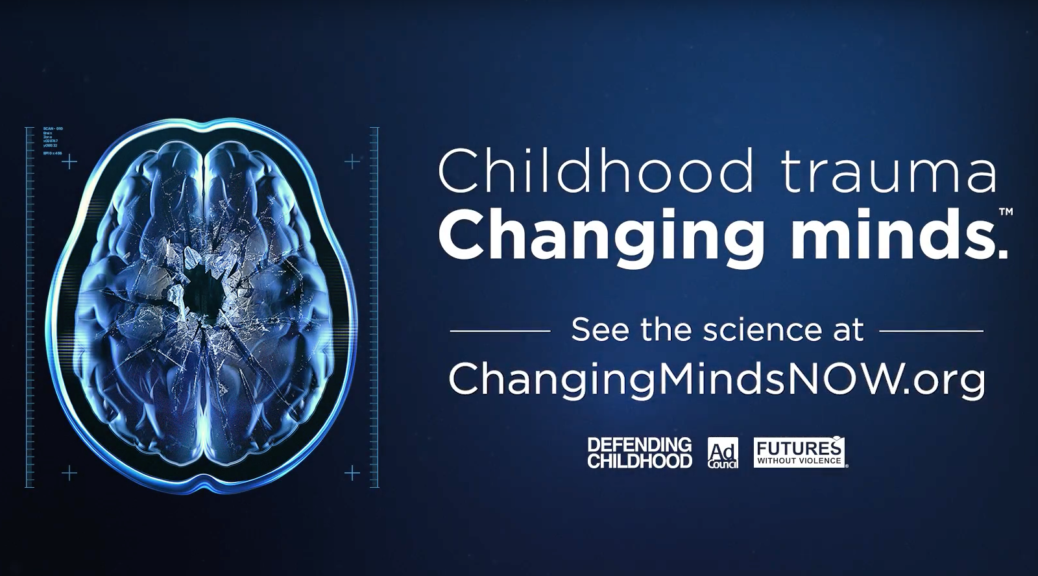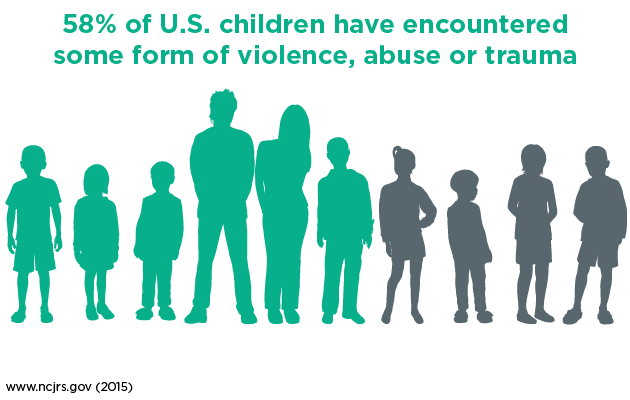How Exposure to Violence Changes a Child’s Brain, and How You Can Help

It is estimated that nearly 60% of U.S. children have either experienced or witnessed violence, crime or abuse in the past year. Research shows that these traumatic events can greatly impact a child’s developing brain and are major risk factors for lifelong health issues and early death. Recently, the U.S. Department of Justice, Futures Without Violence, and the Ad Council developed the Changing Minds NOW campaign in order to raise awareness about the prevalence and impact of children’s exposure to violence and trauma, and provide resources to teachers, counselors, coaches, medical professionals and public service departments within communities to help kids recover from trauma.
“The goal of Changing Minds NOW is to broaden the base of knowledge around children and violence and invest in community-based strategies aimed at mitigating its impact.”
Eric H. Holder, Jr., former U.S. Attorney General
The campaign flows out of the landmark Adverse Childhood Experiences (ACE) study that was conducted from 1995 to 1997, as well as information published in a 2015 National Survey of Children’s Exposure to Violence survey completed by the Justice Departments’ Office of Juvenile Justice and Delinquency Prevention. That survey revealed that 58 percent of all children in America had either witnessed or been a victim of crime in the previous year.
The Science of Minds
The experiences we have in childhood – both positive and negative – impact how neural connections are created in our brain. The more a child is exposed to trauma, the more connections are made in regions of the brain connected to fear, anxiety and impulsiveness. The good news is that the human brain is developing every second of the day, long into adulthood. Stable, supportive relationships with adults and positive experiences can reshape the brain and strengthen neural connections responsible for reasoning, planning and behavioral control. This is why Changing Minds NOW is targeted towards adults and empowers them to help a child overcome the effects of trauma.
Do you believe every child deserves to be safe and connected to a strong family? Join us to receive a few inspiring stories each month and help end childhood adversity. Subscribe here!
Resources and Healing
Two videos on the Changing Minds NOW website showcase stories of adults who have experienced trauma in their childhoods. The website also features a guide for caregivers and other adults with five gestures to help children heal from the damage of trauma. The gestures are:
- Celebrate them with a compliment or by applauding their efforts
- Comfort them by staying calm and patient
- Listen to them and show an interest in their passions
- Collaborate with them by asking their opinions
- Inspire them with new ideas that will help them see a brighter future
For more information on the science of childhood trauma, resources and how you can help, visit www.ChangingMindsNOW.org. You can also visit www.kvc.org/brain to learn more about how KVC is using the latest brain science to align systems and public policy to make real progress on difficult social issues like poverty, substance abuse, family discord, trauma, and physical and mental health.





